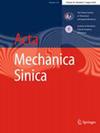Efficient obstacle avoidance planning for multi-robot suspension system based on a collaborative optimization for force and position
Abstract
To avoid collisions between a suspended object, cables, towing robots, and obstacles in the environment in a multi-robot suspension system, obstacle avoidance planning was studied based on a collaborative optimization method for force and position. Based on the analysis of the kinematics and dynamics of the system, the inverse kinematics and inverse dynamics of the system are solved using the least variance method. The obstacle avoidance planning is performed in the solved collision-free feasible space using the stable dung beetle optimization (SDBO) algorithm, which ensures that the suspended object can move stably to the target point in the workspace. The optimal obstacle avoidance trajectory of the multi-robot suspension system can be accurately determined by using the collaborative optimization method for force and position to plan the towing robot and the cable. Finally, the correctness of the obstacle avoidance planning method is verified by simulations. By taking a special scenario, the remarkable findings reveal that the SDBO algorithm outperforms the dung beetle optimization algorithm by reducing the length of the planned trajectory of the suspended object by 14.51% and the height by 79.88%, and reducing the minimum fitness by 95.84% and the average fitness by 94.77%. The results can help the multi-robot suspension system to perform various towing tasks safely and stably, and extend the related planning and control theory.

 求助内容:
求助内容: 应助结果提醒方式:
应助结果提醒方式:


